Enhancing Hengfa’s Digital Experience
View Live ProjectClient
Project type
Role
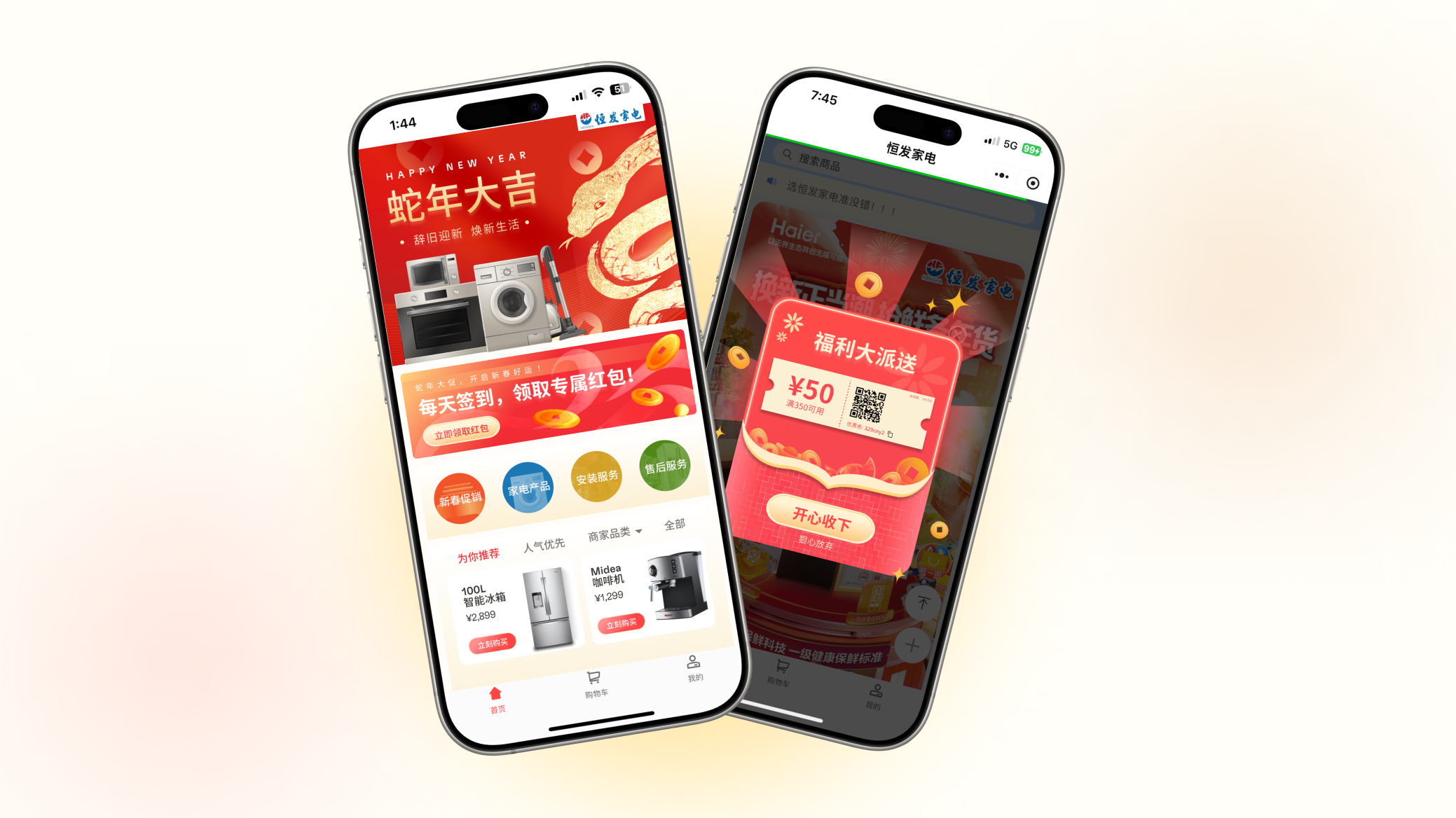
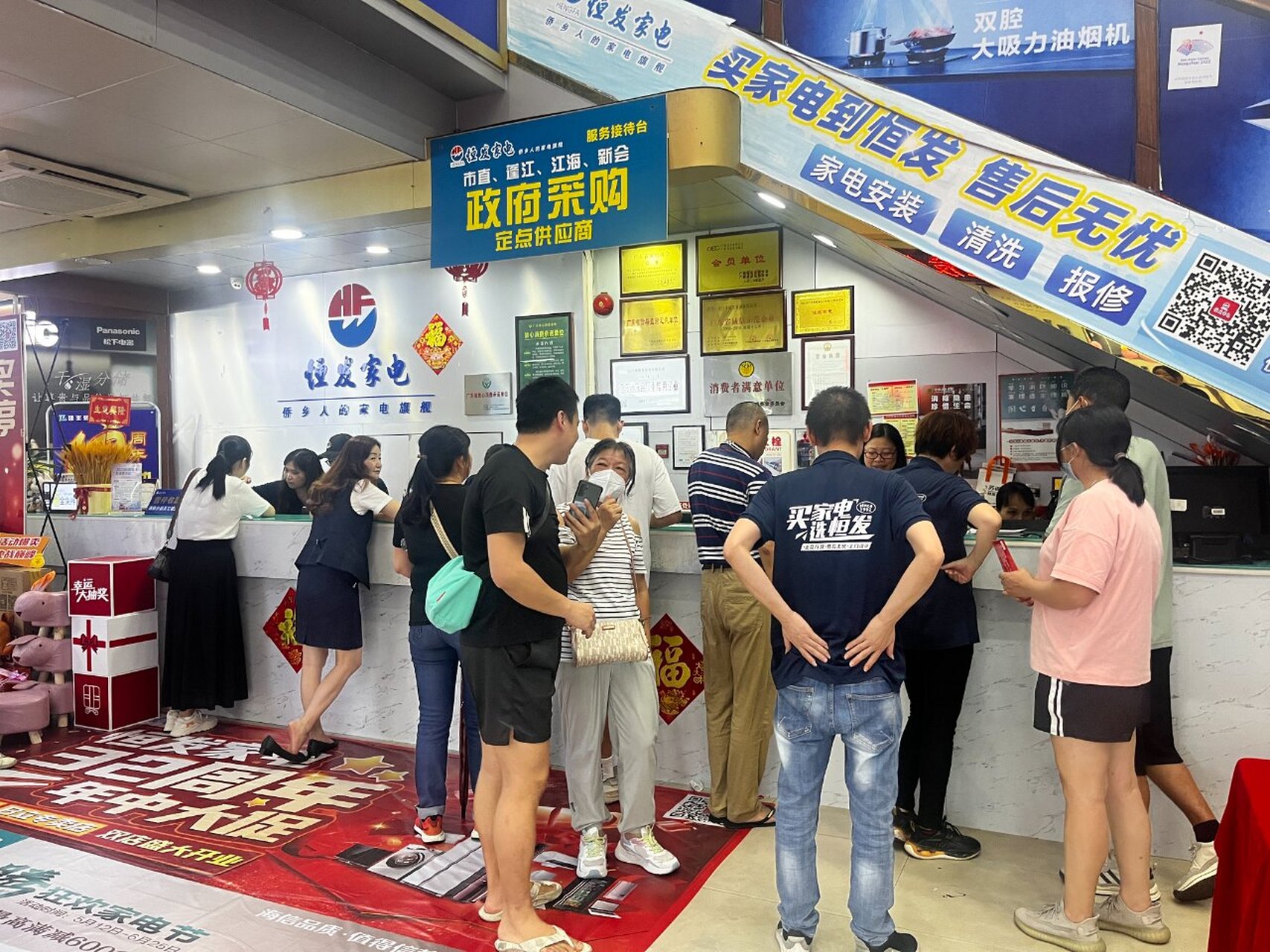
The challenge
Standing Out in a Crowded Market
During peak shopping seasons, customers were drawn to large online platforms offering aggressive discounts. Hengfa needed a way to differentiate itself without engaging in a price war. Their digital presence was underutilized, particularly their WeChat Mini Program, which had potential to strengthen customer relationships and drive online engagement.
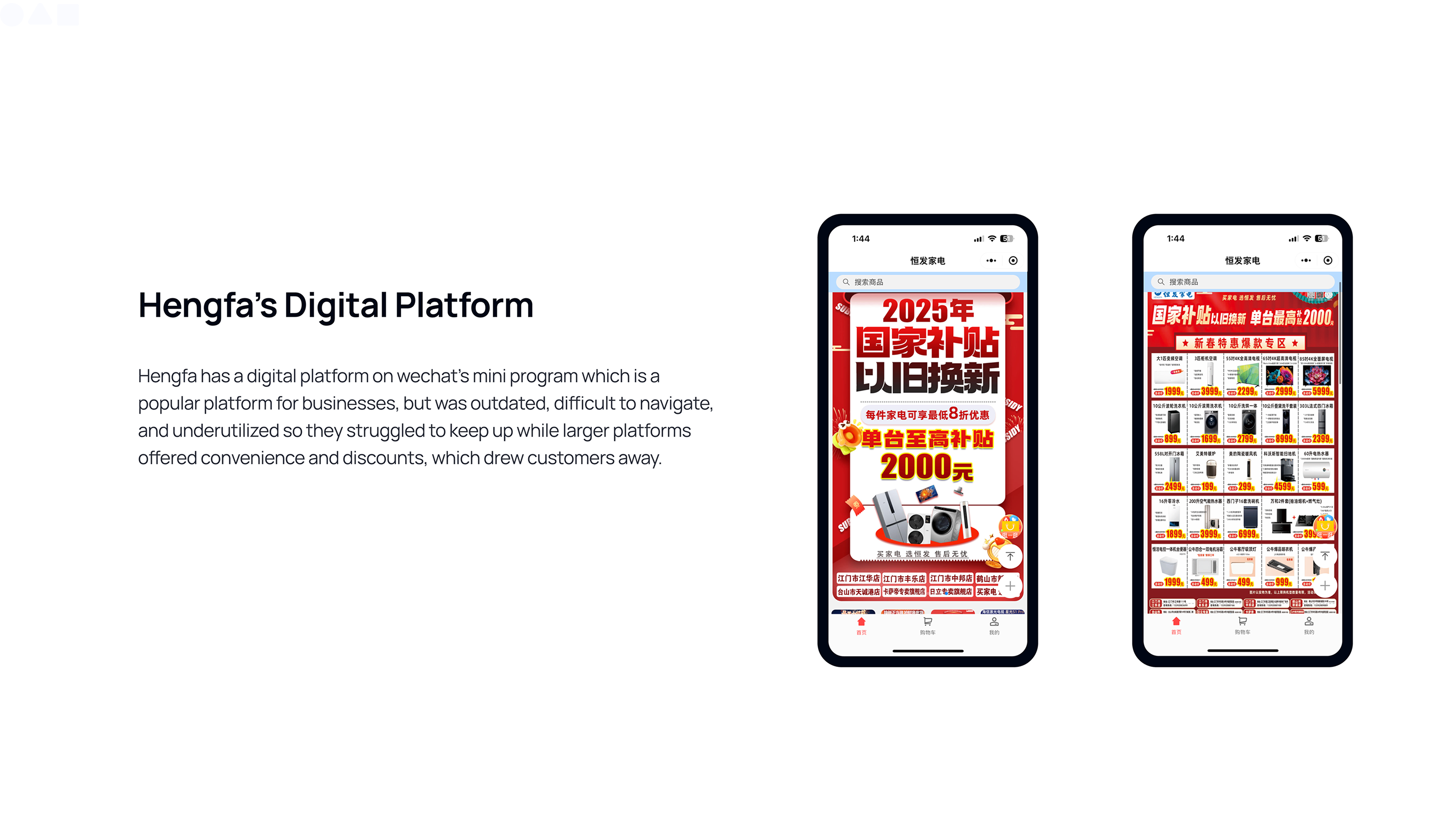
Research
User Interview (w/store managers)
To understand Hengfa’s challenges and opportunities, I conducted user interviews with managers and mapped out the customer journey. Here’s what I learned:Managers emphasized the importance of personalized service and after-sales support, which are key differentiators for Hengfa. However, they also shared that most sales are in-person, and their WeChat Mini Program is underutilized—primarily used for checking promotions
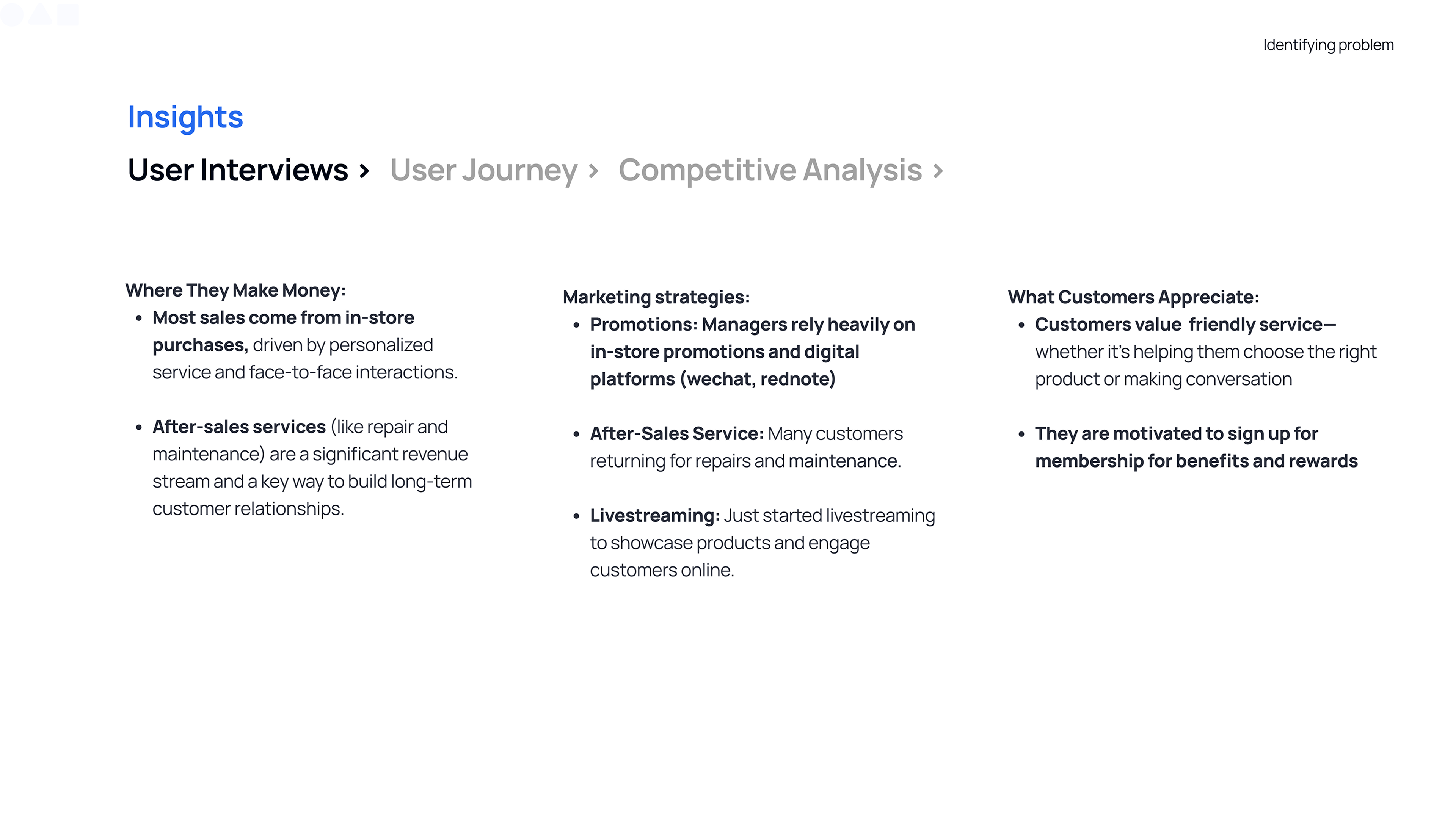
Research
Competitive Analysis
Key Competitor Insights:
Big e-commerce giants offer well-established Chinese New Year digital campaigns with red pocket rewards and daily offers that incentivize purchases and user engagement.
These platforms often provide clear instructions and instant gratification, which encourage users to return and interact daily.Hengfa's challenge: Competing with these platforms' high brand awareness and more seamless digital experiences.
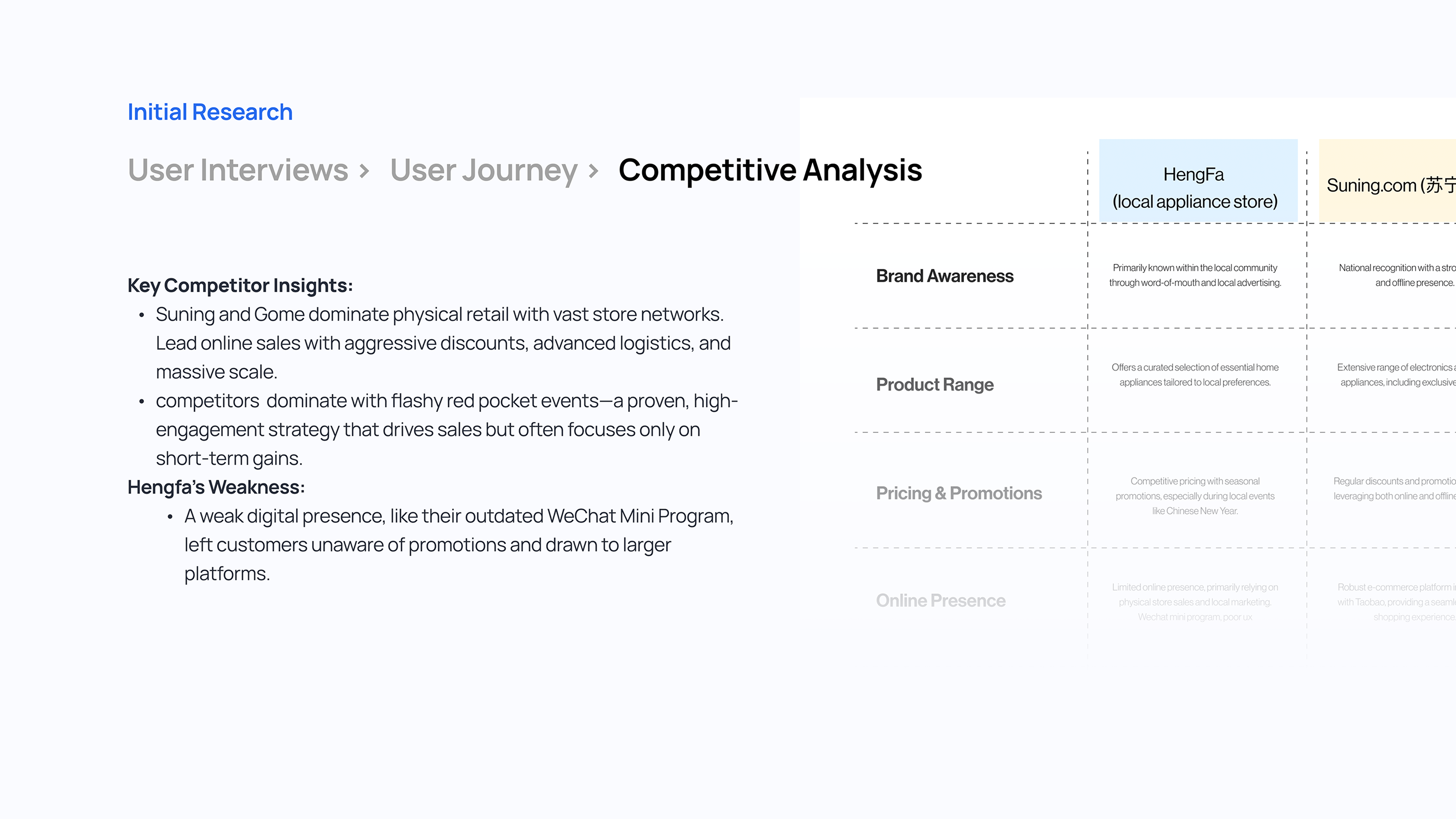
Research
Mapping the User Journey
Next, I mapped out the customer journey to identify pain points and opportunities. While Hengfa excels in in-store experiences and has strong local brand recognition, their digital touchpoints are weak, especially in the Awareness and Consideration stages. Customers often don’t know about Hengfa’s promotions or feel motivated to explore their offerings.This research highlighted a clear opportunity: by enhancing the WeChat Mini Program, we could bridge gaps in the customer journey and create a seamless omnichannel experience. This would not only attract new customers but also strengthen relationships with existing ones
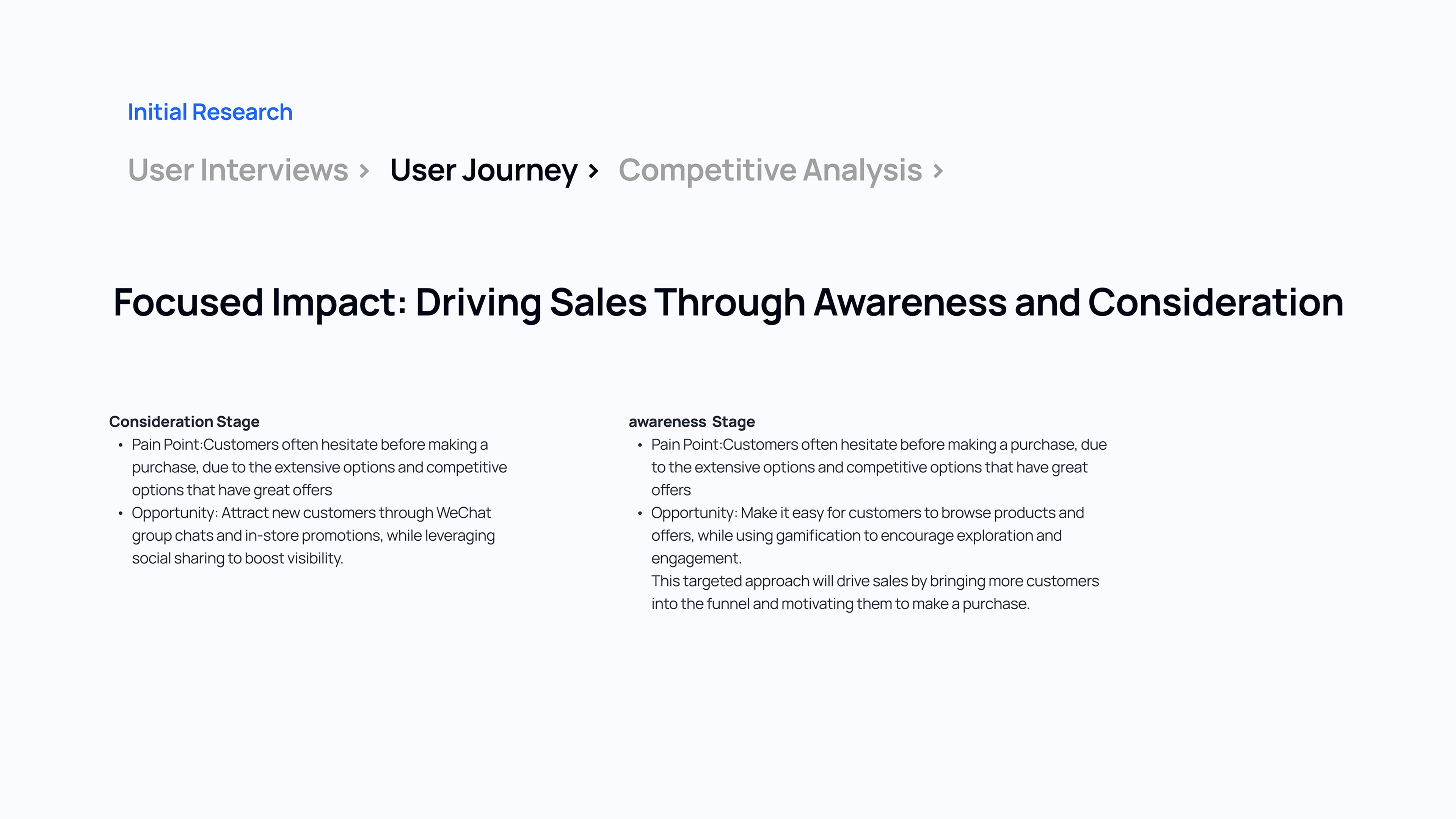

Design
Design Solution
- Streamlined Product Navigation: A clean, easy-to-use homepage that helps users find products quickly without distractions.
- Discreet Deal Banners: Limited-time offers hidden in a subtle banner, making promotions easy to spot without cluttering the page.
- Engaging Reward System: The more customers buy, the better deals they can unlock. Encourages repeat purchases and increases customer spending by rewarding loyalty.
- Red Pocket Points Tracking: A points system on the profile page that shows users their progress toward earning rewards, encouraging more purchases.
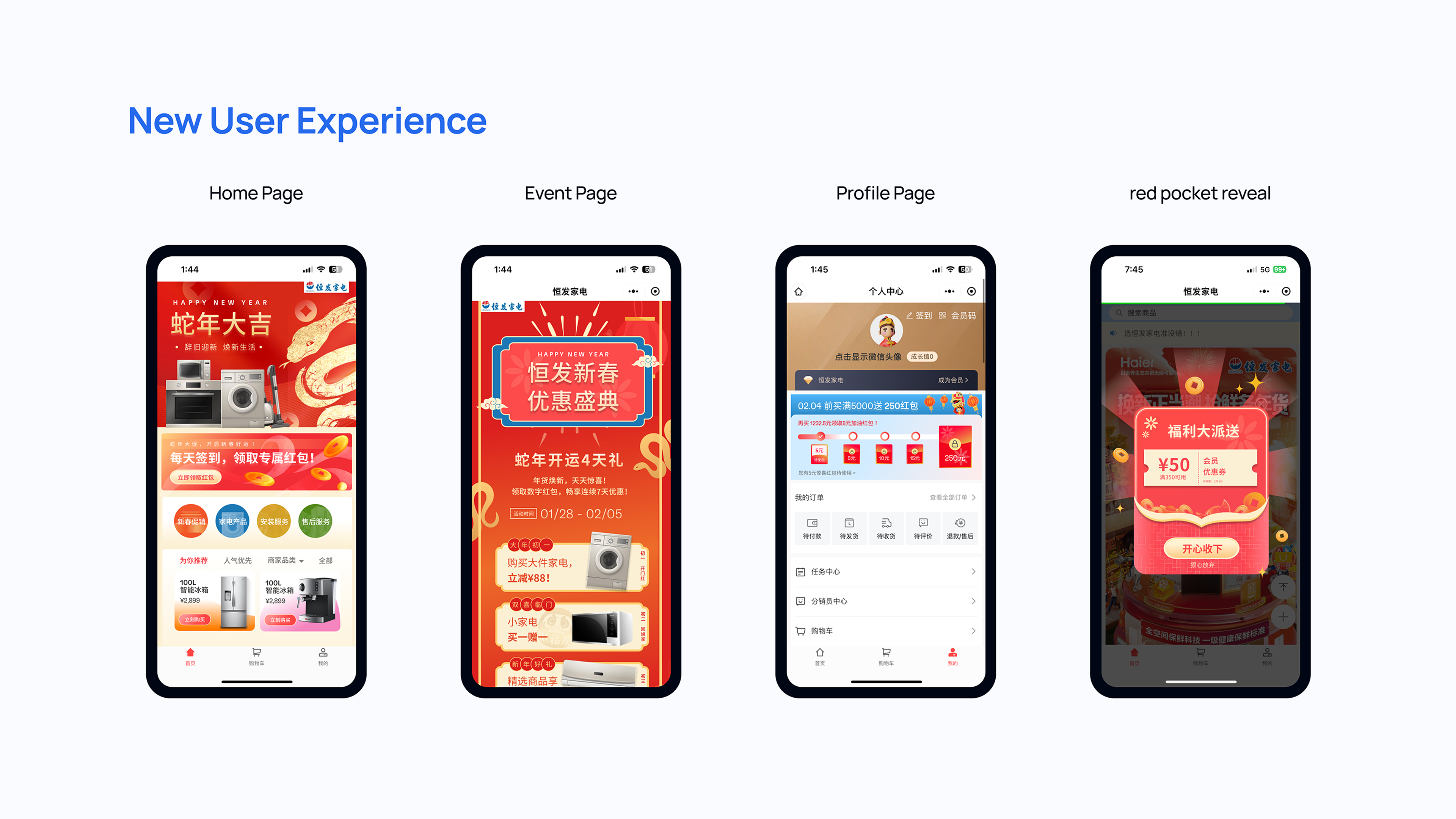
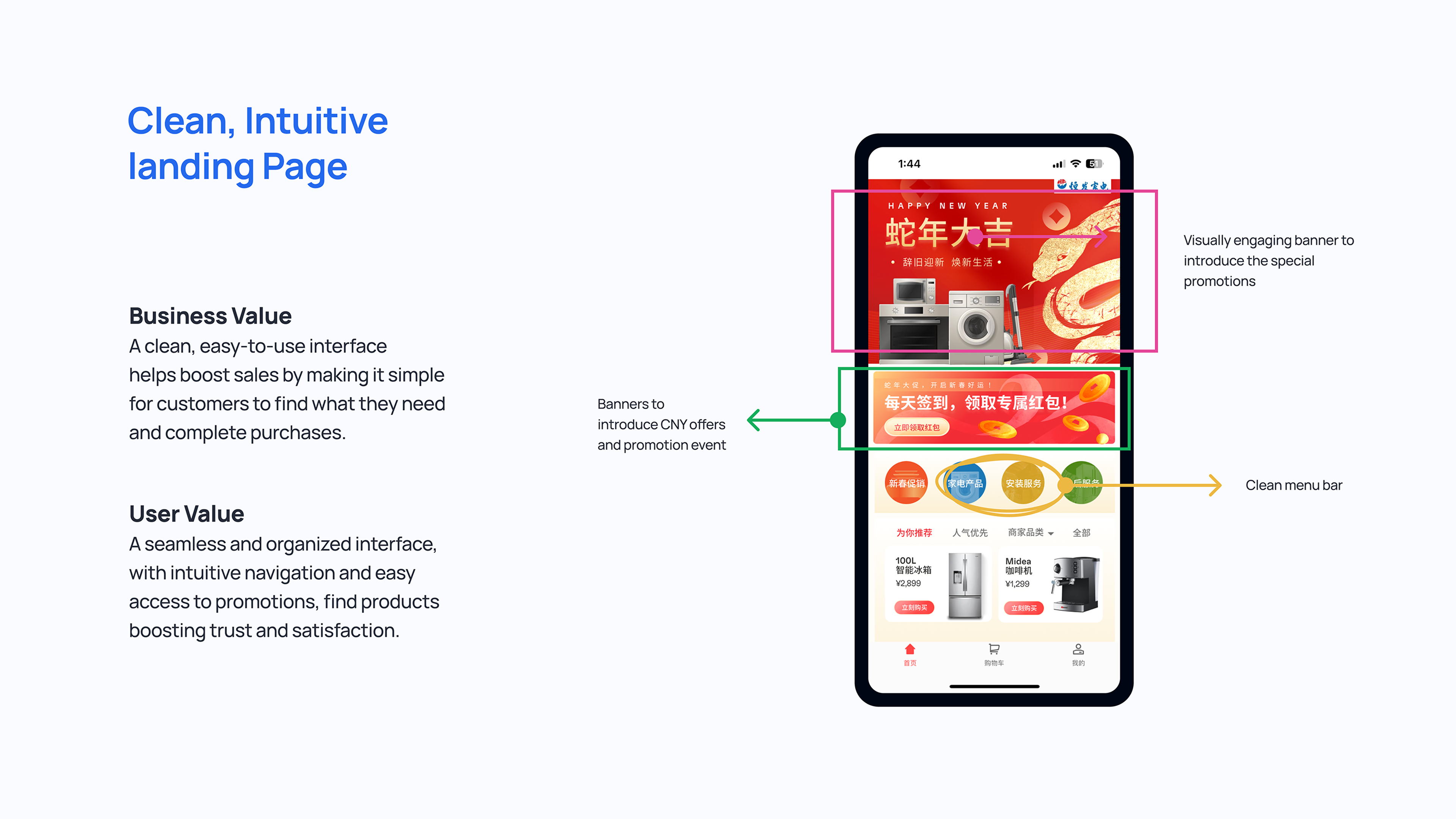
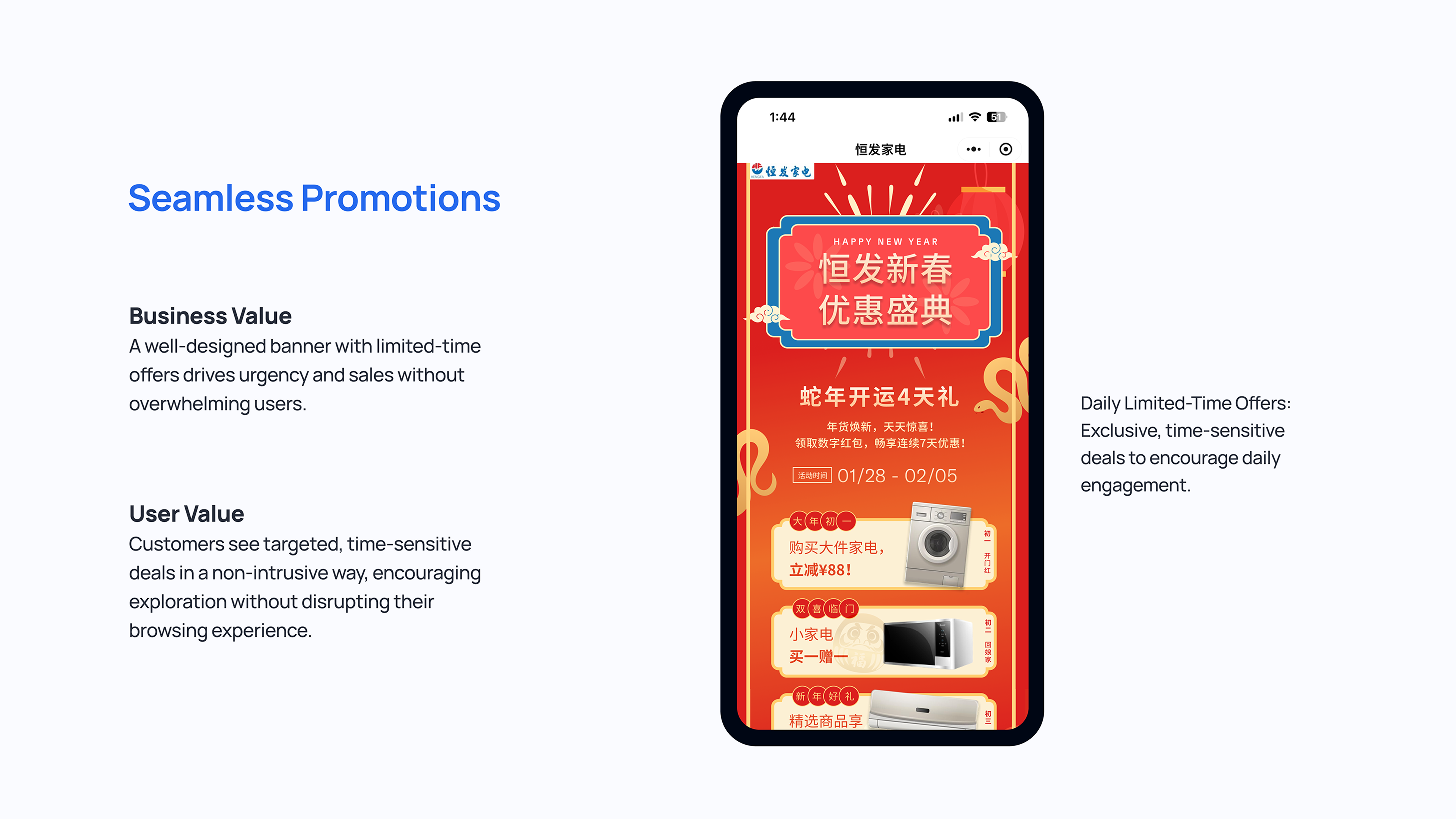
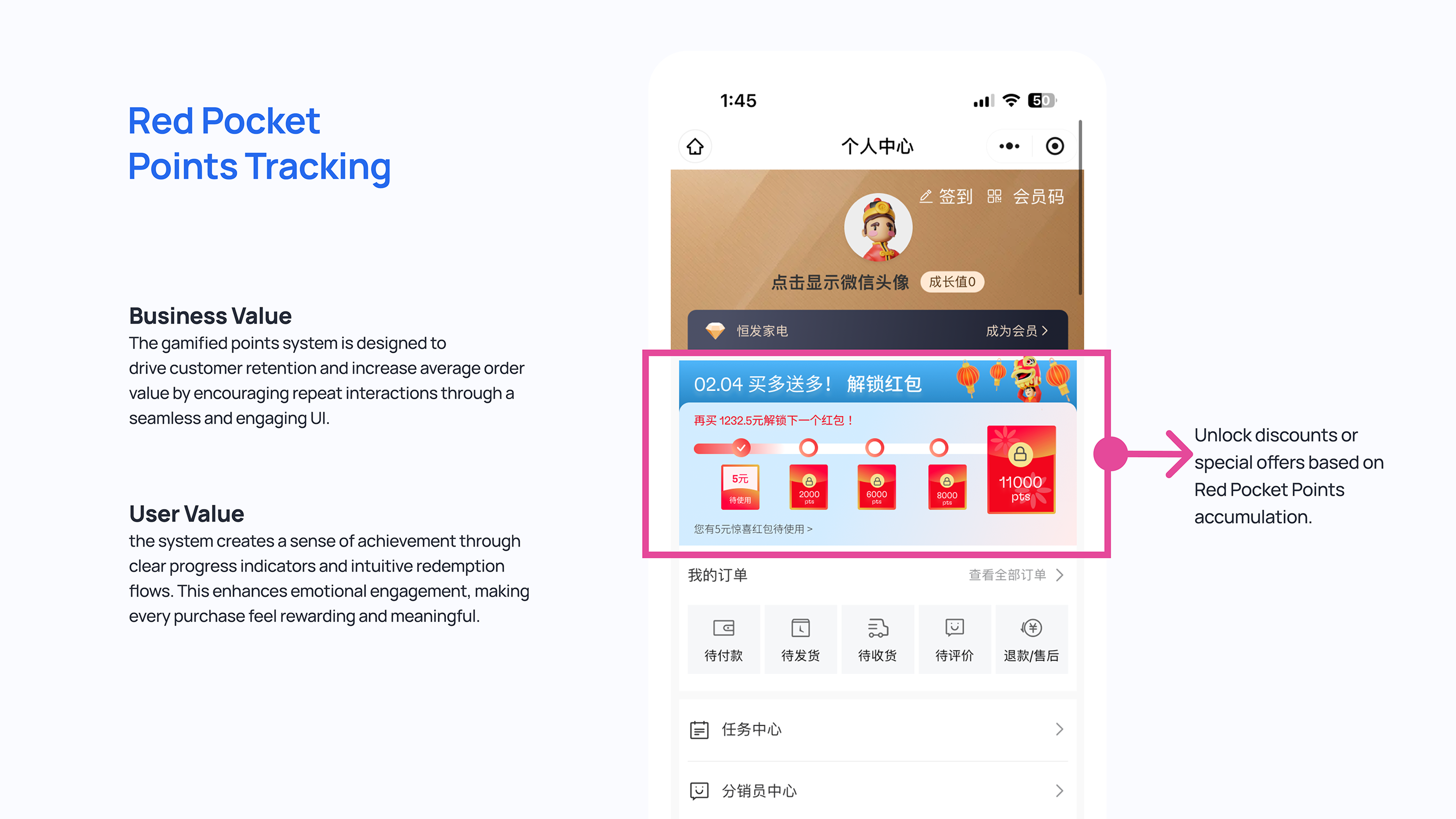
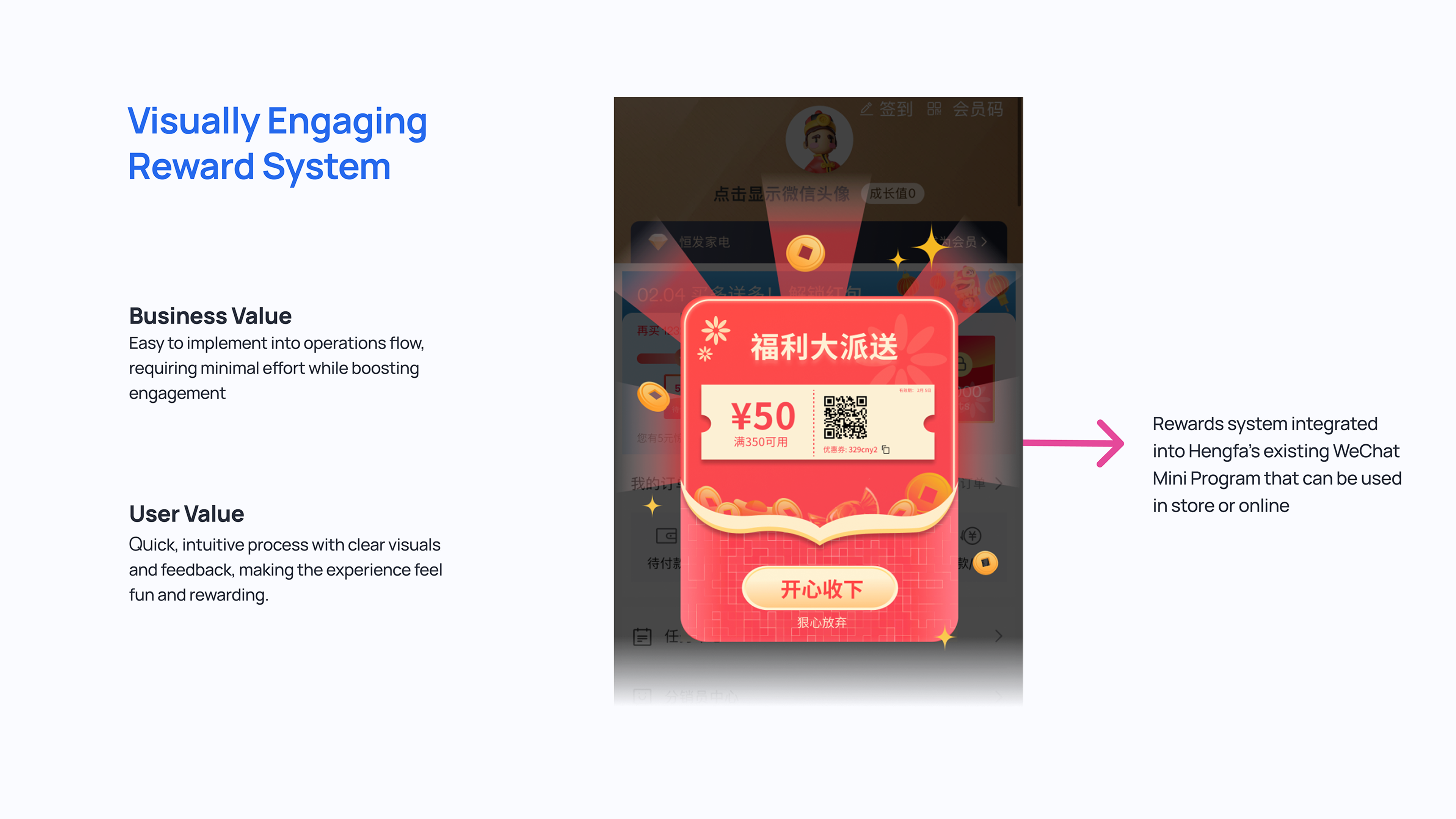
Reflection
What I learned
- Time Limitations: With only 5 days to complete the project, I had to prioritize key features and focus on delivering a simple yet engaging experience. I adopted a rapid iterative process, moving quickly through design iterations and feedback loops to stay on track.
- Remote Work Challenges: Working from overseas meant I couldn’t conduct direct user interviews or observe in-store behavior. Instead, I relied on insights from the store manager and secondary research. While this limited my data, it pushed me to be resourceful and efficient with the information I had.
- Cultural Design Differences:Balancing the information-heavy design favored by Chinese users with a modern, intuitive interface was tricky. I aimed for a design that was simple yet informative, striking the right balance between clarity and ease of use.
